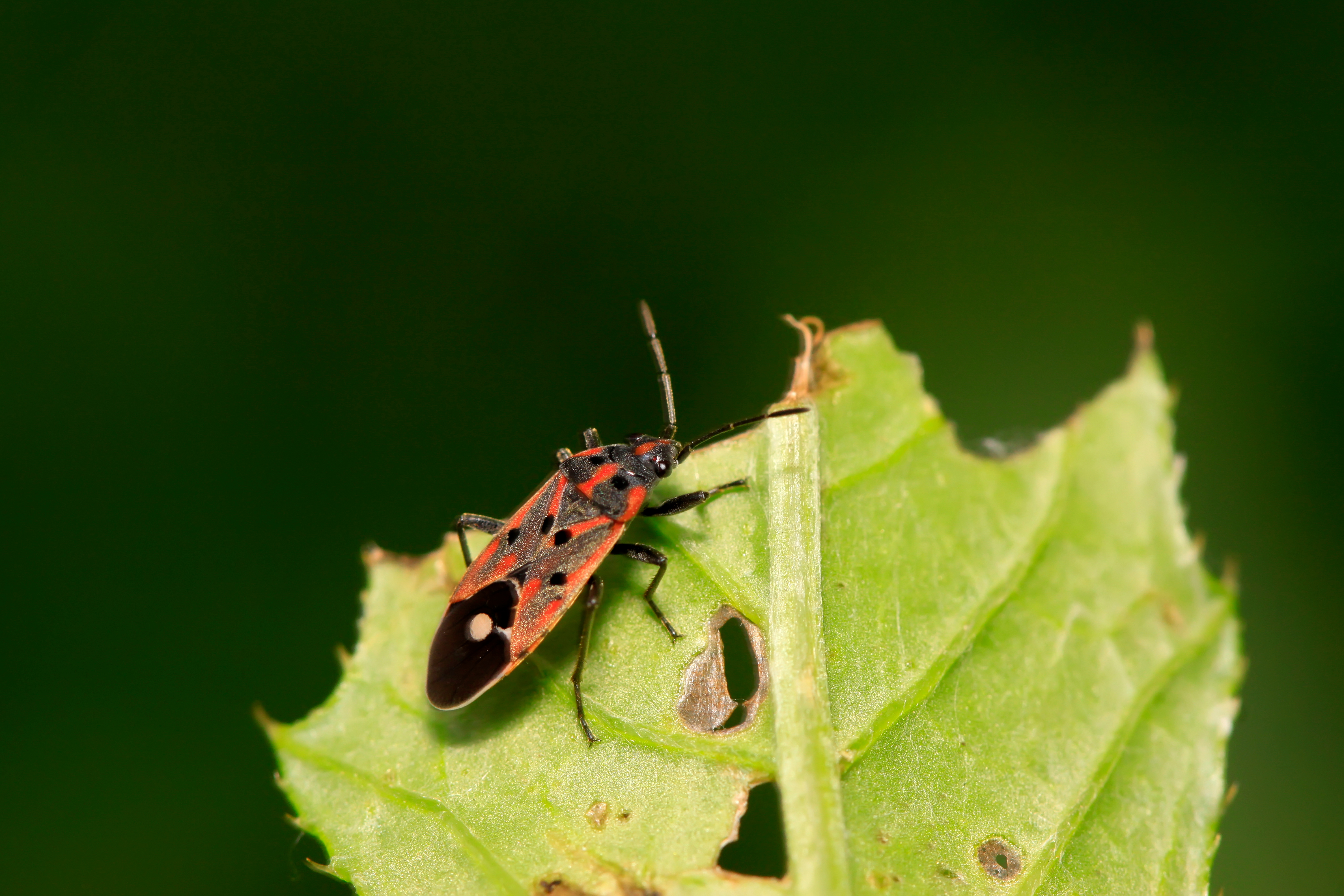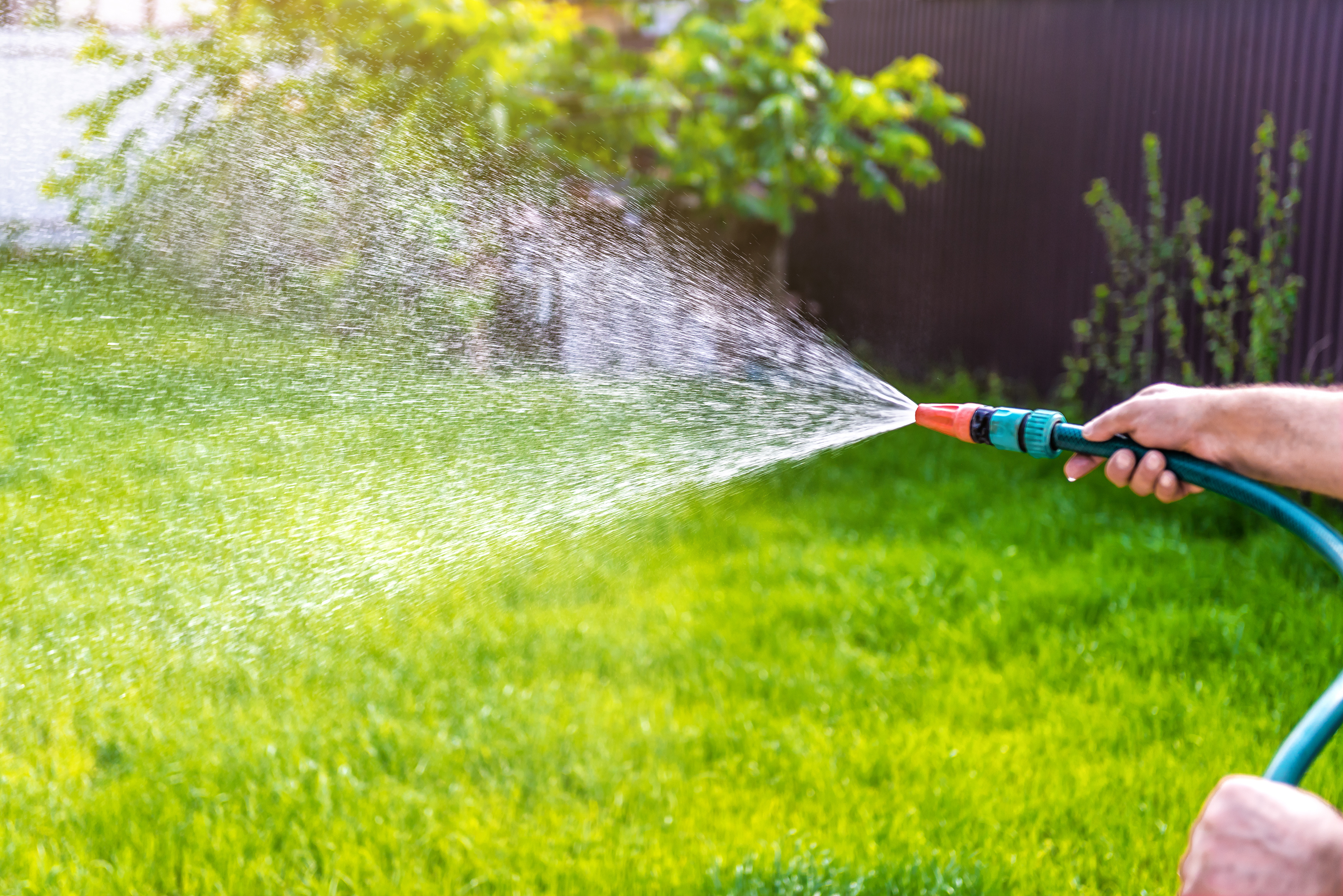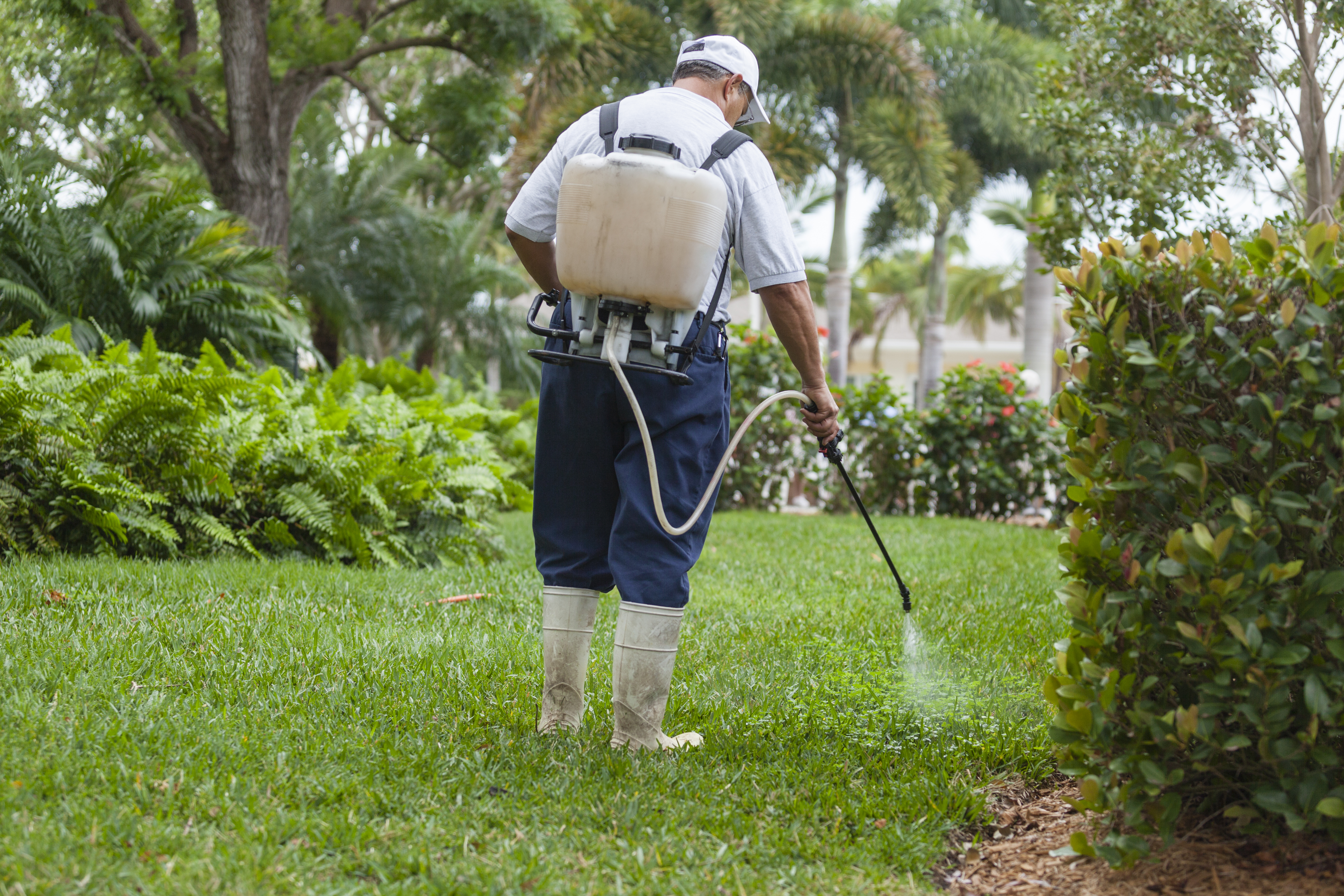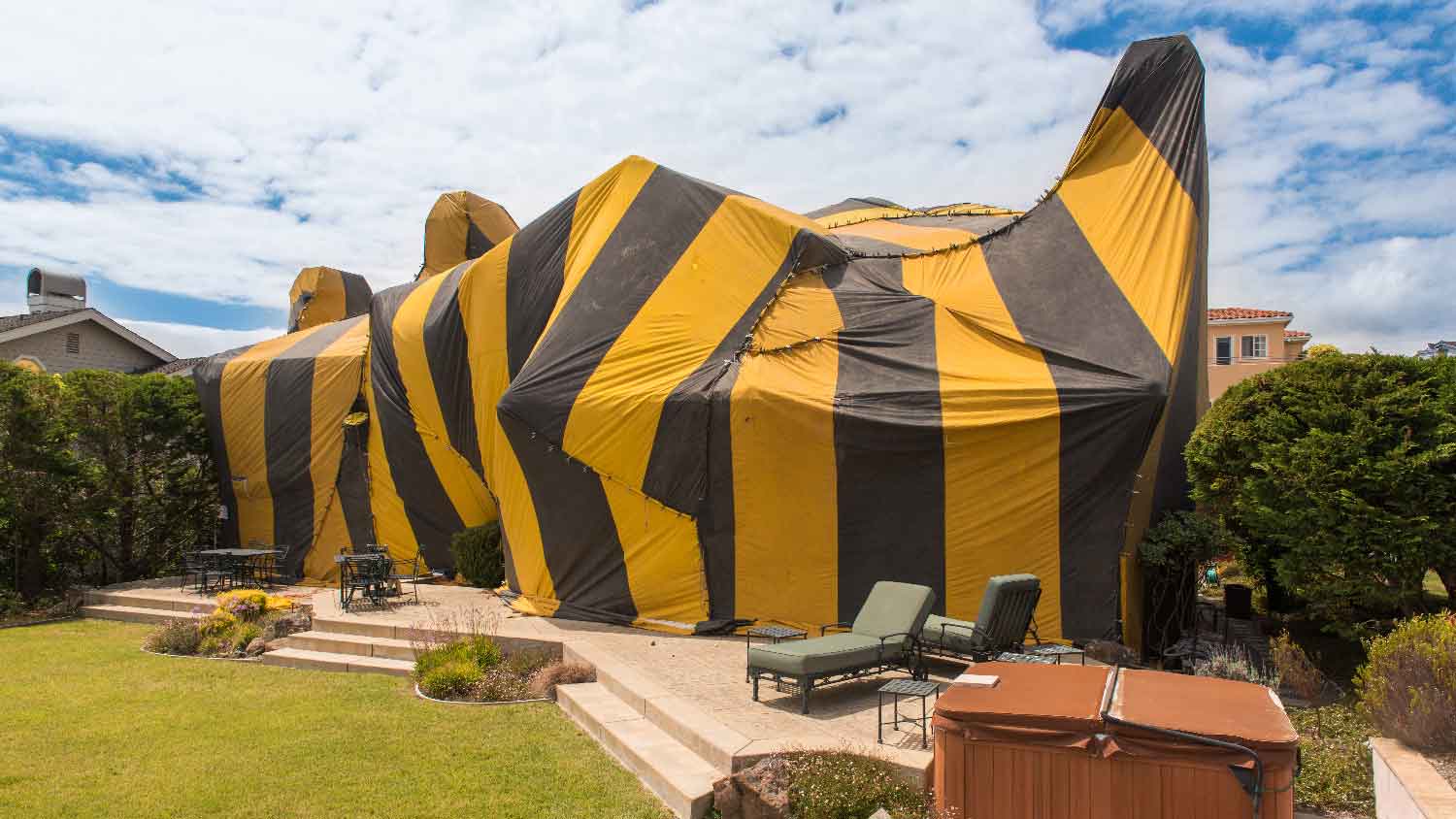
Whether you have bugs, bats, or rodents invading your home, you’ll want to contact an exterminator quickly. Find out how much pest control costs in Columbus, OH.
It’s a chinch cinch when you know what to look for


Chinch bugs, which come out as days heat up, are easily confused with lawn droughts and other problems, so careful examination is important.
If you find patches of yellowing and browning grass that aren’t responding to more water, they could be a chinch infestation.
You can also perform a float test to see if chinch bugs float into water along the edges of the dying patch.
Chinch are treated with certain pesticides, but it can take time for grass to recover. Thatching can prevent re-infestation.
Chinch bugs are a dreaded plague on lawns in warmer climates. The tiny insects stay hidden, sucking grass blades dry until they die and then moving on. That’s why it’s essential to learn the signs of chinch bugs to prevent a major lawn issue.
So how do you know if your grass has chinch bugs? Let’s review the tell-tale signs and when to hire a pest control professional.
You can do everything right with your lawn, and it will still start dying if it gets infested with chinch bugs. Even worse, they often hibernate over winter and spring up again as an unpleasant surprise when the weather warms.
Chinch bugs damage grass by quickly sucking out its sap, which causes your grass to turn yellow or brown or die. Since these lawn pests weaken the grass, it leaves your lawn susceptible to other major issues, such as drought and disease.
Chinch bugs are more common in hotter climates, and love feasting on certain kinds of grasses. That includes Kentucky bluegrass (and other bluegrasses), perennial ryegrass, certain fescues, and more. The hairy chinch bug, in particular, has an appetite for lawn grasses.
You’re much more likely to notice several warning signs in your grass before spotting a chinch bug, including the following:
When grass dries from drought, it tends to start at unwatered edges or sections and then slowly worsen. When something like weedkiller has killed grass, it will kill in a single spot and won’t spread.
But when chinch bugs start killing off grass, they begin in irregular patches, often beginning where the grass gets the most sun. These spots will start to spread, not uniformly but in slow movements as the bugs move in greater circles to find new grass.
Look for these strange, growing patches of yellow grass if you’re worried about the bugs. As the patches grow, the grass at the center of the infestation will die, turning brown, while the edges of the patch continue to yellow.

Hot days can naturally cause lawn drought, but if you’re consistent with your watering, be suspicious of any yellowing and browning that starts when the summer heat hits.
Chinch bugs love the heat and are most active during late spring. If nothing else has changed and your grass gets regularly deep watering, it’s time for a closer look.
One important sign that separates a drought die-off from chinch bugs is that lawns will readily recover from droughts when given enough water. If you’re increasing your irrigation because you’re worried about drought, but the grass isn’t recovering—it seems to be getting worse—chinch bugs could be the real root of the problem.
Finally, there’s one test that can nearly confirm chinch bugs, but it will take some work. First, you need a can with openings at both ends, like a coffee can with the bottom cut off or something similar (a broad section of pipe could work).
Place the pipe on the edge of the dying grass, so some healthy green grass is included, too. That’s where the chinch bugs are active. Dig it into the ground by an inch or two, then fill it with water. If you have chinch bugs, they should start floating to the surface for identification. Don’t mistake lawn months or other bugs for chinch bugs, take a close look to confirm.
Consider hiring a pest control pro if chinch bugs are completely out of control and large portions of your lawn are suffering. A pest control service can help remove the pests, but we suggest also hiring a landscape or turf expert to talk about how to bring your lawn back to life. Consult a local pest control pro about the best course of action for removing chinch bugs from your lawn.
As a DIY project, tackling chinch bugs is relatively budget-friendly. You can purchase insecticide sprays for around $30 to $50. However, you can expect to spend more on irrigation and upkeep to help your lawn resist the bugs in the future, too. If you decide to hire a professional for a particularly bad infestation, simple pest control visits cost around $170 on average while inspections start at $125.

After your lawn is chinch-bug free, it’s a good idea to take a few more steps to stop them from returning:
Apply approved pesticides: You can apply pesticides that prevent chinch bugs, especially if they are common in your area. Applying safe pesticides could stop an infestation before it begins.
Don’t overfertilize: Overfertilizing your grass can encourage chinch bugs and weaken your grass’s defenses. Always apply according to instructions and wait a significant time before applying again. Most grasses only need fertilizer around twice per year.
Keep grass as long as possible: When grass is shorter, it heats the grass blades and ground more, encouraging chinch bug activity. To keep them less active, find the upper height recommended to trim your grass, and set your mower to cut at this height when weather warms. That’s around 4 inches for cool-season grasses and 2 inches for warm-season grasses, but look up your individual species.
Water and aerate appropriately: Watering and aerating keep grass stronger, more able to defend against chinch bugs and a less hospitable environment for them to linger and feed over time.
Switch to a more resistant grass: If you’re ready to replace your lawn, consider switching to a grass that’s happy in your climate and resists bugs. Options include perennial ryegrass and tall fescues.
Occasionally dethatch: Chinch bugs love to hide in the thatch below growing grass blades. It’s a good idea to have your lawn detatched every year or two to keep the thatch cleared and prevent chinch bugs from finding a home.
From average costs to expert advice, get all the answers you need to get your job done.

Whether you have bugs, bats, or rodents invading your home, you’ll want to contact an exterminator quickly. Find out how much pest control costs in Columbus, OH.

Budget for the cost of tick extermination services using our helpful cost guide.

Tenting is a costly but effective way to exterminate termites. Learn the average termite tenting cost and everything that will factor into your budget.

Wondering why there are so many phorid flies in your home? Learn several ways to protect your home from this household pest.

Discover methods for how to get rid of rabbits using humane tactics, including fences, repellents, and a decoy garden. Get ready to send those bunnies hopping.

Cockroaches are annoying, but German cockroaches are on another level. Here’s how to get rid of German cockroaches and when to call in an exterminator.